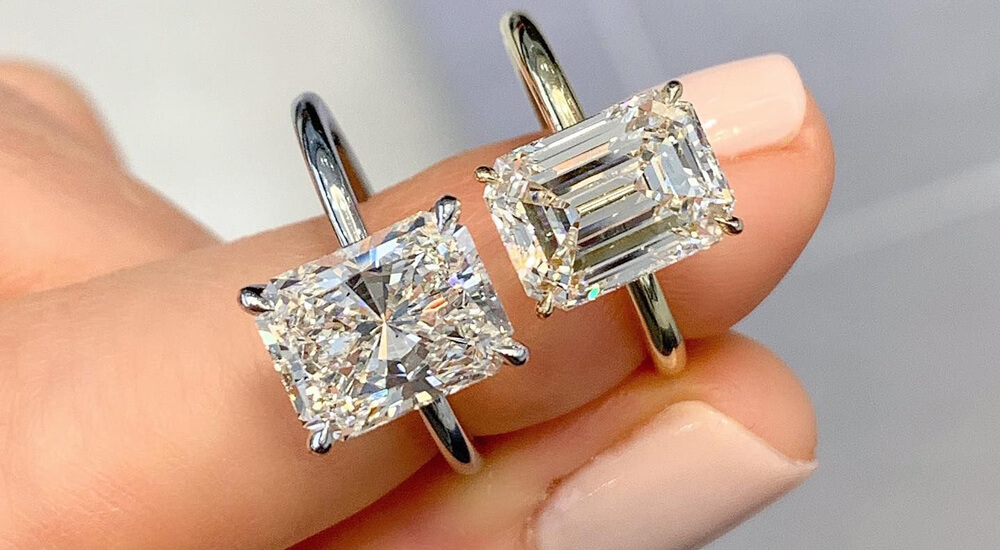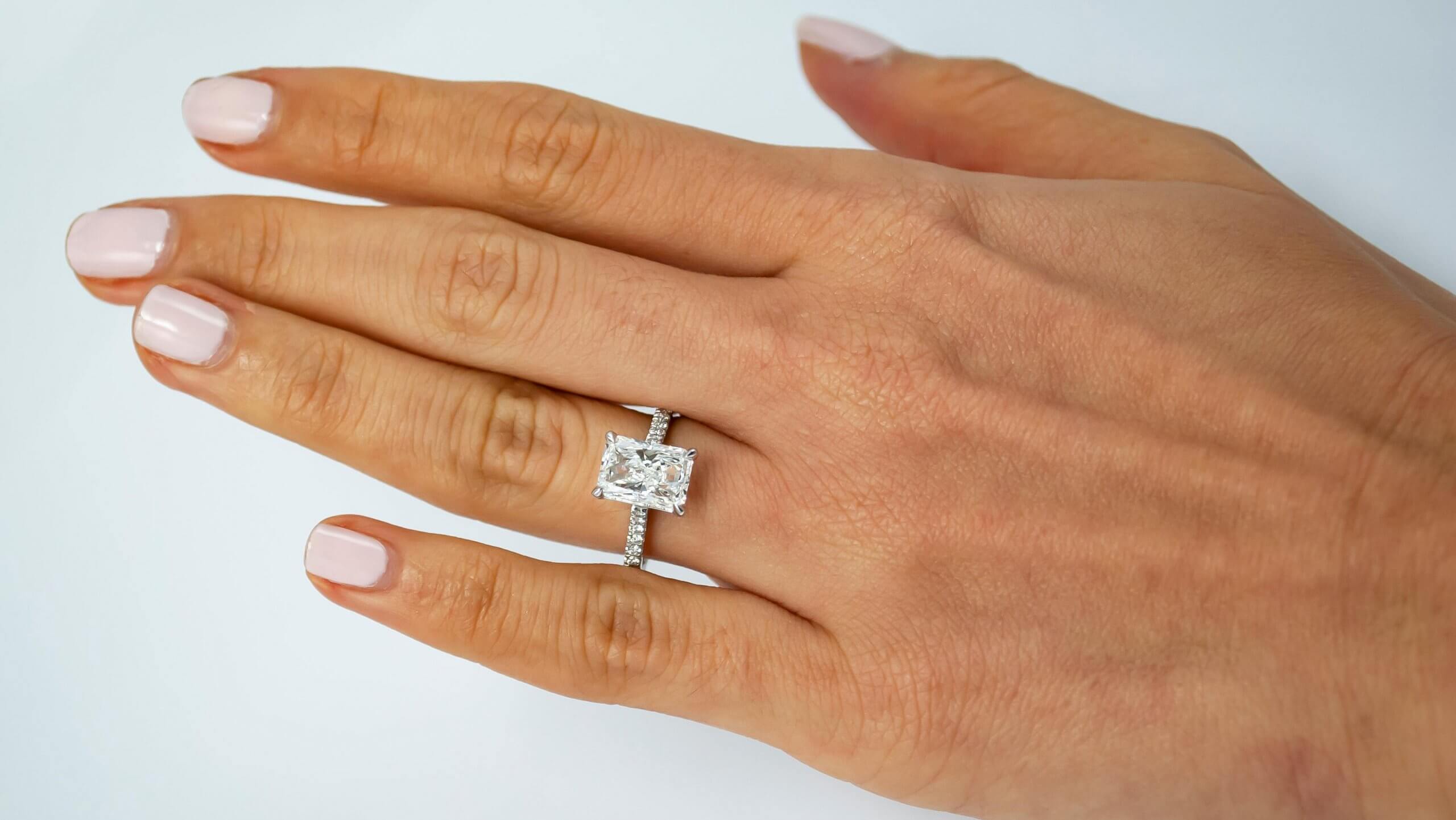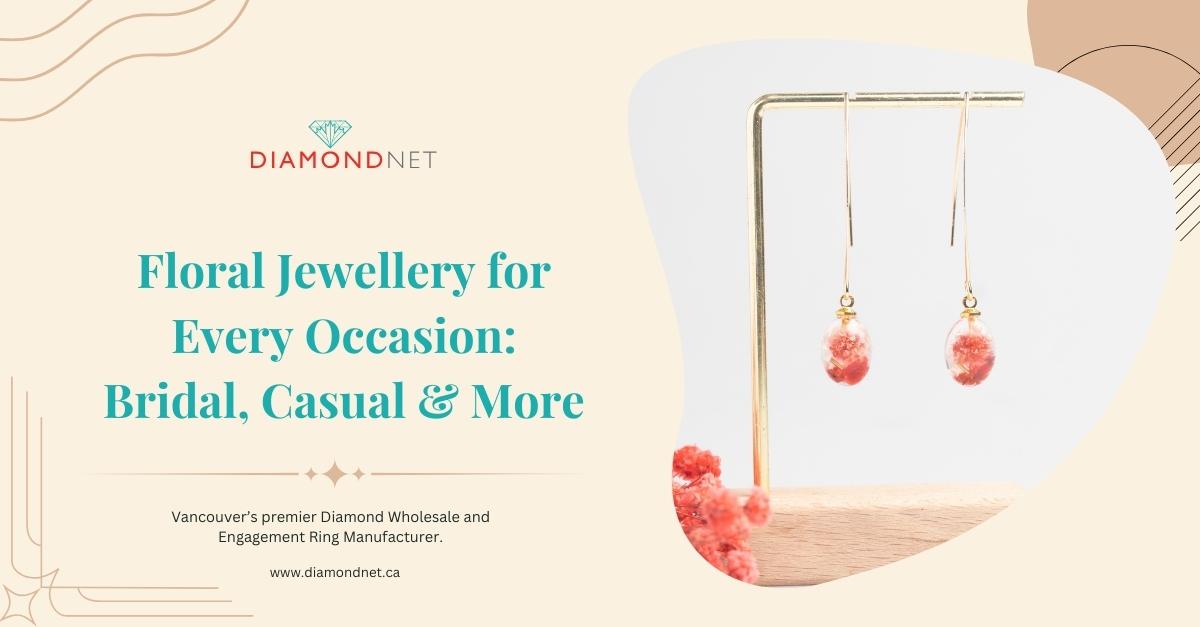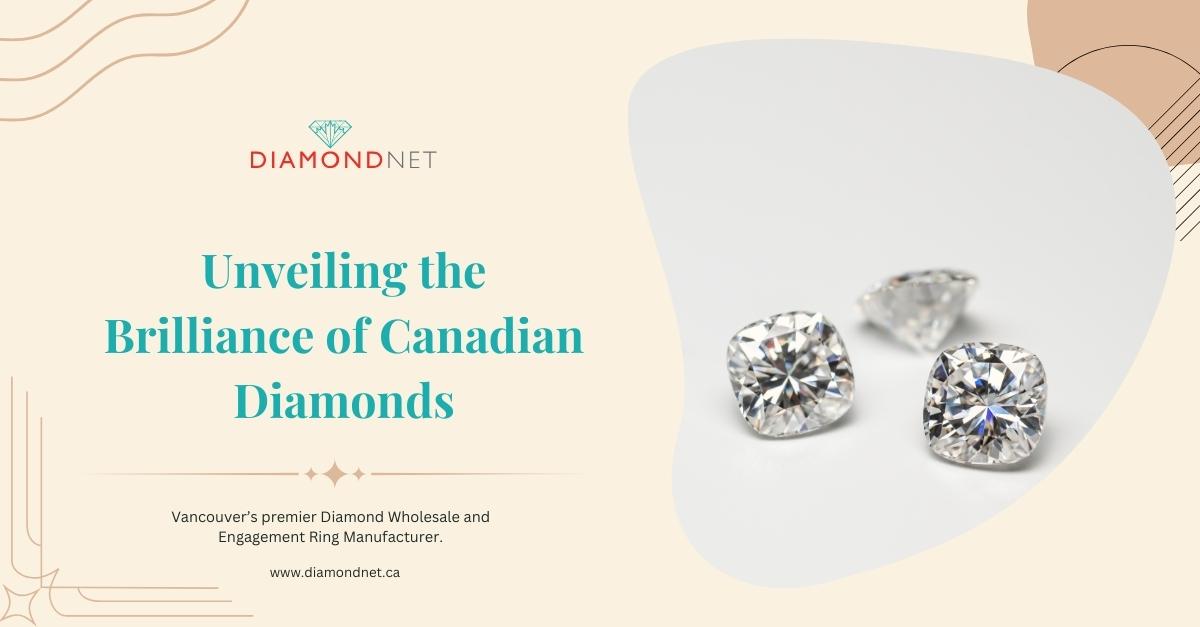On trend since the 1980s, the radiant cut diamond lives up to its name: it is impressively radiant and brilliant. Henry Grossbard designed this faceted diamond in 1977 in an effort to fuse the best parts of the round brilliant and the emerald.
Choosing a radiant cut diamond for your engagement rings is embracing vintage while still maintaining a modern and timeless edge. The radiant cut is praised for appearing larger than most of the other diamonds of the same carat weight. This is by design. When Henry Grossbard created the radiant cut in the 1970s, he wanted a diamond cut that looked as big as possible. The radiant cut has a broad, shallow design which results in more visibility once set. The end product is a ring that appears to have a much larger stone than it does.
Radiant cut diamond with a complete brilliant-cut pattern
Brilliance (or sparkle) is a major consideration when it comes to choosing your center stone. Radiant diamonds typically have 70 facets, the flat surfaces one the geometric shape of the diamond. These flat surfaces serve as prismatic points to reflect light and sparkle. Because of its multi-faceted brilliance, radiant cuts are more forgiving of inclusions than other square cuts, especially with the naked eye.
The radiant cut diamond is the first square cut to have a complete brilliant-cut facet pattern. Brilliant cuts consist of triangular and kite-shaped facets that spread outward from the center of the gem. True to its name, the brilliant cut provides the most shine and splendor of any cut.
Radiant vs. emerald or round brilliant cuts
The rectangular radiant cut is an excellent option for buyers who like the emerald cut shape but want to include the brilliance of a round. Different facet shape means that emerald cut diamonds typically take on a soft, more subtle glow, while radiants are more sparkly.

Radiant cut vs Emerald diamond cut
Radiant-cut rectangle diamonds lengthen the finger, and carefully beveled corners mean greater durability against chips and breakage. This making it an excellent choice for those with an active lifestyle. This feature also allows the radiant to be paired alongside both square and rounded diamonds.
Bow-tie effect in radiant cut diamonds
With longer, more rectangular radiant cut diamonds, a bow-tie effect is something to be mindful of. Varying from near invisible to severe, the bow-tie effect looks exactly like it sounds: a black shape that resembles a man’s bow tie. The visibility of a bow-tie effect is noticeable upon visual inspection.
Best proportions for a radiant cut
The ratio you choose for your radiant diamond is entirely dependent on what you find to be the most aesthetically pleasing. A common range for radiant length to width ratios is 1.00-1.35, with the lower end indicating a squarer shape. Length to width ratios increase up to 2.0 for a more rectangular shape.
Best setting for a radiant cut
This diamond cut is unique but neutral, and as such it can suit a variety of ring styles. It looks great as a lone wolf solitaire because of its brilliance and shape but can also knock it out of the park as a three-stone ring. You will sometimes see radiant cuts in wedding bands as well.
Most jewelers advise against choosing a bezel setting with this cut because the excess metal takes away from the natural sparkle and reflection.
Note: Radiants will need a minimum of four prongs (usually situated at the clipped corners of the diamond) to hold the stone in place safely.



